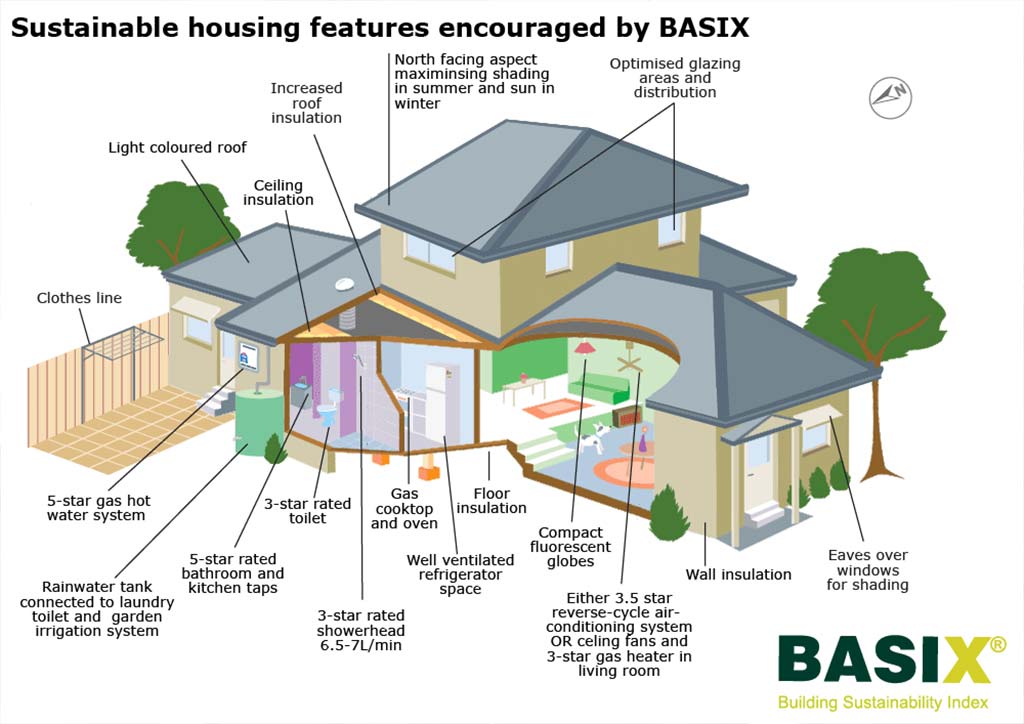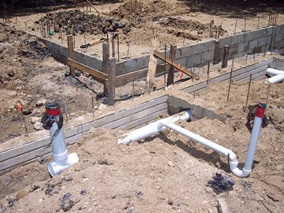The Key Parts of Your Home's Plumbing System
The Key Parts of Your Home's Plumbing System
Blog Article
They are making a few good points on Understanding Your Home's Plumbing Anatomy overall in this article just below.

Understanding how your home's plumbing system works is important for every property owner. From delivering tidy water for drinking, food preparation, and bathing to safely removing wastewater, a well-maintained plumbing system is essential for your family members's health and wellness and comfort. In this thorough guide, we'll discover the intricate network that composes your home's plumbing and offer ideas on maintenance, upgrades, and managing typical issues.
Intro
Your home's plumbing system is more than simply a network of pipes; it's a complicated system that ensures you have access to tidy water and efficient wastewater elimination. Understanding its components and exactly how they work together can assist you prevent costly repair services and make certain whatever runs smoothly.
Fundamental Components of a Pipes System
Pipes and Tubes
At the heart of your plumbing system are the pipes and tubes that bring water throughout your home. These can be constructed from numerous materials such as copper, PVC, or PEX, each with its benefits in regards to sturdiness and cost-effectiveness.
Components: Sinks, Toilets, Showers, etc.
Fixtures like sinks, commodes, showers, and bathtubs are where water is utilized in your house. Recognizing how these components connect to the pipes system helps in identifying problems and preparing upgrades.
Valves and Shut-off Factors
Shutoffs control the flow of water in your plumbing system. Shut-off valves are crucial throughout emergencies or when you need to make fixings, allowing you to separate parts of the system without interrupting water circulation to the whole home.
Water System
Key Water Line
The major water line links your home to the community water supply or a personal well. It's where water enters your home and is distributed to numerous fixtures.
Water Meter and Stress Regulatory Authority
The water meter procedures your water use, while a stress regulatory authority ensures that water flows at a safe pressure throughout your home's plumbing system, preventing damages to pipes and components.
Cold Water vs. Warm water Lines
Comprehending the distinction between cold water lines, which provide water straight from the primary, and warm water lines, which lug heated water from the water heater, helps in repairing and preparing for upgrades.
Water drainage System
Drain Pipeline and Traps
Drain pipes carry wastewater away from sinks, showers, and commodes to the sewage system or septic system. Catches protect against sewer gases from entering your home and additionally catch particles that might create clogs.
Ventilation Pipelines
Air flow pipelines enable air into the drainage system, preventing suction that can slow down drain and cause catches to empty. Correct air flow is important for maintaining the stability of your plumbing system.
Relevance of Appropriate Drainage
Making sure proper water drainage avoids back-ups and water damage. Consistently cleaning up drains pipes and maintaining catches can prevent pricey repair work and expand the life of your plumbing system.
Water Furnace
Kinds Of Hot Water Heater
Water heaters can be tankless or typical tank-style. Tankless heating systems heat water as needed, while tanks keep warmed water for immediate usage.
Exactly How Water Heaters Connect to the Plumbing System
Recognizing how water heaters attach to both the cold water supply and hot water circulation lines helps in diagnosing problems like insufficient hot water or leakages.
Upkeep Tips for Water Heaters
Routinely purging your water heater to get rid of debris, examining the temperature setups, and evaluating for leaks can prolong its life expectancy and boost power efficiency.
Typical Pipes Issues
Leaks and Their Causes
Leakages can occur because of aging pipes, loosened installations, or high water pressure. Dealing with leaks quickly avoids water damage and mold development.
Blockages and Obstructions
Obstructions in drains and toilets are frequently triggered by purging non-flushable things or a build-up of oil and hair. Utilizing drainpipe screens and being mindful of what goes down your drains can protect against clogs.
Signs of Plumbing Issues to Expect
Low tide stress, sluggish drains pipes, foul odors, or abnormally high water costs are indications of prospective pipes troubles that need to be addressed without delay.
Plumbing Maintenance Tips
Normal Inspections and Checks
Schedule yearly pipes examinations to capture concerns early. Seek indicators of leaks, deterioration, or mineral accumulation in taps and showerheads.
Do It Yourself Maintenance Tasks
Easy tasks like cleansing faucet aerators, checking for toilet leakages making use of color tablet computers, or protecting subjected pipelines in cold environments can avoid significant plumbing concerns.
When to Call an Expert Plumbing
Know when a pipes concern requires specialist proficiency. Attempting intricate fixings without appropriate knowledge can lead to more damages and higher repair prices.
Upgrading Your Pipes System
Factors for Upgrading
Upgrading to water-efficient components or replacing old pipes can enhance water top quality, lower water costs, and increase the value of your home.
Modern Plumbing Technologies and Their Benefits
Check out modern technologies like clever leak detectors, water-saving toilets, and energy-efficient water heaters that can conserve cash and lower environmental impact.
Expense Factors To Consider and ROI
Determine the upfront costs versus long-lasting savings when considering plumbing upgrades. Many upgrades spend for themselves via reduced utility expenses and less repair work.
Environmental Influence and Conservation
Water-Saving Components and Appliances
Setting up low-flow faucets, showerheads, and commodes can significantly decrease water use without giving up performance.
Tips for Decreasing Water Use
Straightforward practices like taking care of leaks quickly, taking much shorter showers, and running complete lots of washing and recipes can preserve water and reduced your utility costs.
Eco-Friendly Plumbing Options
Think about lasting pipes products like bamboo for floor covering, which is durable and environmentally friendly, or recycled glass for countertops.
Emergency Readiness
Actions to Take During a Pipes Emergency situation
Know where your shut-off valves are located and how to turn off the water in case of a ruptured pipe or significant leakage.
Significance of Having Emergency Situation Contacts Useful
Maintain call information for regional plumbers or emergency services readily available for fast feedback during a plumbing crisis.
DIY Emergency Situation Fixes (When Applicable).
Momentary repairs like utilizing duct tape to patch a leaking pipe or placing a bucket under a dripping tap can decrease damages till an expert plumbing gets here.
Verdict.
Comprehending the anatomy of your home's plumbing system encourages you to keep it successfully, saving money and time on repair services. By complying with regular maintenance regimens and remaining informed about contemporary pipes technologies, you can ensure your pipes system operates successfully for several years to come.
HOW YOUR PLUMBING SYSTEM WORKS
Which Pipes Do What?
Blue lines = fresh water supply entering the building
Red lines = hot water supply entering the building
Grey lines = pipes carrying waste away from the building and venting pipes carrying gases away from the building (through the roof)
YOUR MAIN PLUMBING SYSTEMS
There are two main plumbing systems that support your home s basic plumbing needs one that brings clean water into your home, and one that sends dirty water away from your home. Connected to the toilet, bath, shower, and other faucets in your home, these two systems keep your water flowing in the right directions.
ACCESSING FRESH WATER
Fresh and clean water is brought into your home through the main water supply line . Filtered through one pipe, this water is pressured to flow into the various fixtures in your home at any given time.
This water can be sourced from a well located on your property, a pond or river (mostly cottages), or, as in most cases, from the city s municipal water treatment centre. However, it is important to note that water that is untreated, such as the water siphoned from ponds or rivers, may not be safe to drink. Personal water supplies always need to be treated for hardness and contaminants before consumed.
MUNICIPAL WATER SUPPLIES
Improve taste and odour
Remove sediment
Eliminate hardness
Reduce chlorine
COLD WATER SUPPLY VS. HOT WATER SUPPLY
Cold water flows into your home or building through the service line, which then distributes hot or cold water to your fixtures. This line is most commonly run through a central column that runs floor to floor. Hot water runs in short and straight pipes as the longer the pipeline, the more heat that will be lost in the transfer. Having shorter pipes also allows residents to access hot water more quickly.
WASTE WATER SYSTEM
Your wastewater system is divided into two parts pipes that send wastewater away from your home and venting pipes that send sewer gas away from your home. Sewage water travels through pipes that flush the water and waste towards local sewers that are operated and managed by your city or town. Most sewer systems rely on gravity to move the wastewater to where it needs to go.
The further away from your toilet or sink, the larger wastewater pipes become. This allows for waste to be disposed of from various parts of your home or business at once without pipe blockages. The angle and flow of these pipes are also essential for keeping your waste pipes clear of build up.
https://harrisplumbing.ca/how-your-home-plumbing-system-works/

HOW YOUR PLUMBING SYSTEM WORKS
Which Pipes Do What?
YOUR MAIN PLUMBING SYSTEMS
There are two main plumbing systems that support your home s basic plumbing needs one that brings clean water into your home, and one that sends dirty water away from your home. Connected to the toilet, bath, shower, and other faucets in your home, these two systems keep your water flowing in the right directions.
ACCESSING FRESH WATER
Fresh and clean water is brought into your home through the main water supply line . Filtered through one pipe, this water is pressured to flow into the various fixtures in your home at any given time.
This water can be sourced from a well located on your property, a pond or river (mostly cottages), or, as in most cases, from the city s municipal water treatment centre. However, it is important to note that water that is untreated, such as the water siphoned from ponds or rivers, may not be safe to drink. Personal water supplies always need to be treated for hardness and contaminants before consumed.
MUNICIPAL WATER SUPPLIES
COLD WATER SUPPLY VS. HOT WATER SUPPLY
Cold water flows into your home or building through the service line, which then distributes hot or cold water to your fixtures. This line is most commonly run through a central column that runs floor to floor. Hot water runs in short and straight pipes as the longer the pipeline, the more heat that will be lost in the transfer. Having shorter pipes also allows residents to access hot water more quickly.
WASTE WATER SYSTEM
Your wastewater system is divided into two parts pipes that send wastewater away from your home and venting pipes that send sewer gas away from your home. Sewage water travels through pipes that flush the water and waste towards local sewers that are operated and managed by your city or town. Most sewer systems rely on gravity to move the wastewater to where it needs to go.
The further away from your toilet or sink, the larger wastewater pipes become. This allows for waste to be disposed of from various parts of your home or business at once without pipe blockages. The angle and flow of these pipes are also essential for keeping your waste pipes clear of build up.
https://harrisplumbing.ca/how-your-home-plumbing-system-works/
As a reader on , I assumed sharing that short article was a good idea. You should set aside a second to promote this blog posting if you enjoyed reading it. Thank you for your time. Please come visit our site back soon.
Book A Service Report this page